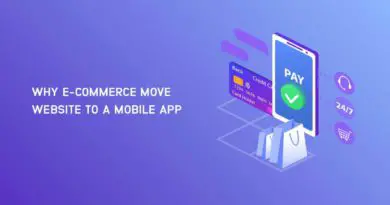6 Tech-Savvy Ways To Boost Ecommerce Sales
In 2022, e-commerce has become a solid catalyst for business development. Whether a startup or a multi-national organization, every company invests in e-commerce to expand its retail business.
As every entrepreneur is stepping their foot in the digital world, competition is becoming fierce. Some businesses have optimized websites to score higher rankings, while others strive to improve user experience. While these elements can get you on the top of the search engine results page (SERP), what about sales? Without sales, an e-commerce store is meaningless. Therefore, focus on implementing strategies that help you increase sales and profits.
Many entrepreneurs utilize the conventional sales model by offering discounts on online orders. Unfortunately, that’s too mainstream, failing to generate profitable returns. So, why not think out of the box? In today’s tech-driven world, you can integrate tech to boost sales. Perhaps, offer a personalized shopping experience or attract visitors through gamified ads.
If you are ready to make your e-commerce store stand out, have a look below. Here we have highlighted six tech-savvy ways to boost sales.
Table of Contents
Find your target audience
Usually, marketers outline the business objectives and goals to find their niche market. It helps them identify people interested in their product and service offerings. But isn’t this time-consuming? In this tech-savvy economy, digital tools can perform this function more accurately.
Nowadays, automated product taxonomy tools can create tags and data points, allowing managers to categorize e-commerce products. After categorization, it establishes a taxonomy system that helps the brand reach customers searching for similar products. In turn, brands can target those customers and convert visitors into prospective high-paying clients. It will give customers the quickest way to find what they want, building loyalty and increasing sales.
Personalize shopping experience
Unsurprisingly, the digital world has a lot to offer to today’s e-commerce businesses. In addition to creating brand awareness, it gives brand owners access to valuable data. They can use this data to personalize customers’ shopping experiences.
You will access every user’s purchase history, browsing patterns, and personal information such as birthday. Hence, you can use this information to provide a personalized shopping experience. Perhaps, wish them on their birthday by sending an email. Likewise, you can give recommendations based on their past purchases. It will strengthen your customer relationship, building loyalty while generating profitable returns through increased conversion rates.
Moreover, you can also collect browsing history to comprehend customers’ tastes and preferences. Maybe you can put together a list of items to try based on their style preferences. If a visitor has been looking for cross-body bags, you can display them on your webpage.
Incorporate exit pop-ups
Often, visitors leave the webpage without completing their journey. Perhaps they didn’t find the prices reasonable or the shipping costs too high. Here, exit pop-ups can come in handy. It can be an incredible conversion tool that keeps visitors on-site for longer while encouraging them to take action. Let us explain how these pop-ups work.
You have to use conditional statements in exit pop-ups to capture visitors. Similarly, ensure you have granular control over who sees what offers and when. If a customer is turning away at the checkout counter, try capturing them with a 10% signup discount. Likewise, you can offer them free delivery in exchange for their email. These offers tempt the visitors to complete their purchase journey, helping you boost e-commerce sales.
Use video demonstrations
Many websites have added video content, yet they can’t generate results. It happens when your videos affect the webpage’s loading speed. Similarly, you will fail to attract users if the videos are monotonous. Believe it or not, only interactive and engaging videos can attract many visitors. People love to watch videos that encourage them to take action. Likewise, unboxing and packing videos can also keep the viewers hooked.
For this, you have to invest in intuitive video editing software. Besides video merging, it should allow you to add animations and elements to video content. Moreover, you can also offer visitors a virtual tour of your product or services. Highlight the key features and explain how it solves problems faced by users. It will help customers understand your offerings better, improving sales prospects.
Integrate paid ads
Unless you have a renowned brand with millions of followers, you must invest in paid marketing. For that, you must utilize Google AdWords or pay-per-click campaigns to get your eCommerce store in front of audiences. However, that doesn’t mean you must spend thousands of dollars on paid campaigns. Instead, you can run various small campaigns on different platforms.
You can start with social media advertisements. It could be a highly effective strategy to get your eCommerce store in front of the consumers searching for similar products. Once you have ads up and running on different forums, use A/B testing. It will allow you to analyze results, clearly understanding which forums generate the maximum gains.
Improve customer service
New-age buyers are more likely to purchase from companies that offer exceptional customer service. So, do you have a track record of resolving customer complaints? If not, start today. You can add an option of live chat on your e-commerce store. Visitors can get in touch with an AI-enabled bot at any time of the day. The personalized bot will respond to standard queries such as delivery time and shipping charges within seconds. Remember, prompt responses by the brand can provoke impulse buying behavior, increasing sales.
Furthermore, you can integrate customer relationship management software. It will help you keep track of all customers to date, allowing you to develop retention strategies. In addition, you can record buyers’ feedback on the software and upload it to your store. Lastly, CRM also allows brands to send personalized email messages to customers while giving them immediate replies in case of complaints.
Conclusion
The competition in digital markets has skyrocketed in the past few months. After all, every brand, whether big or small, is dependent on e-commerce sales. But only a few brands know how to increase their numbers while maximizing profits. More than hard work and effort, it requires you to think out of the box and develop intuitive strategies. You can streamline the customer experience, add video content, or integrate tech-savvy software in your e-commerce store.



